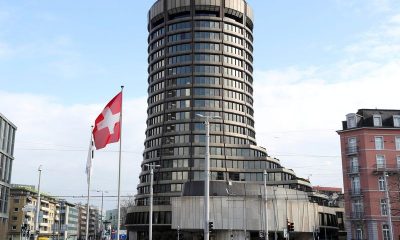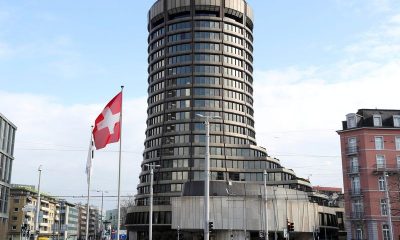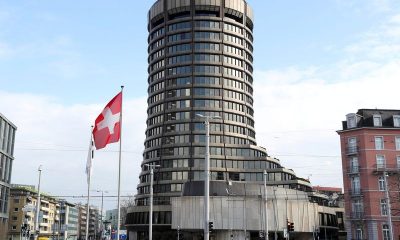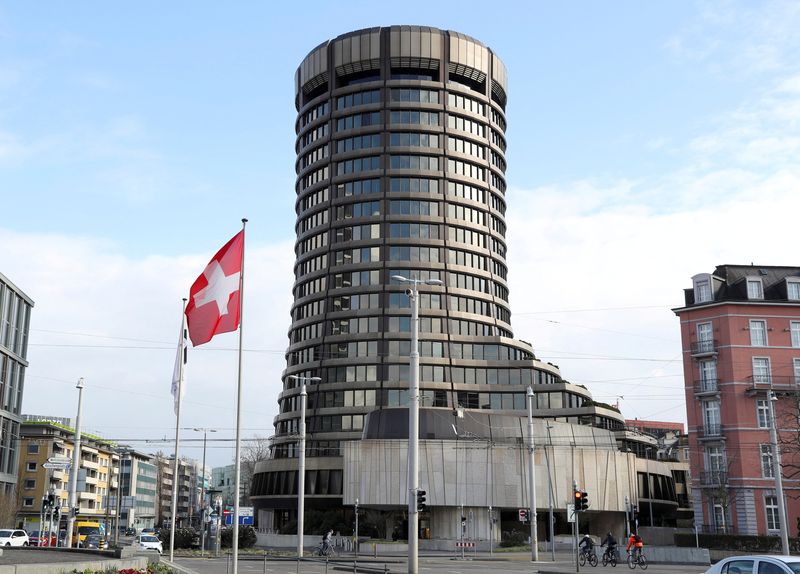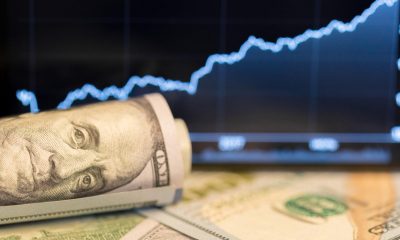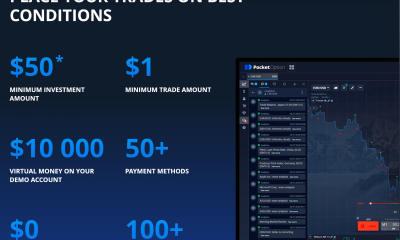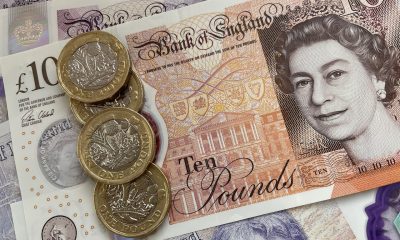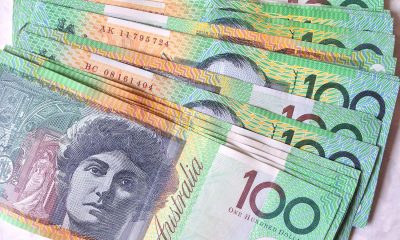Forex
Greenback keeps on climbing, dollar index at 10-month high
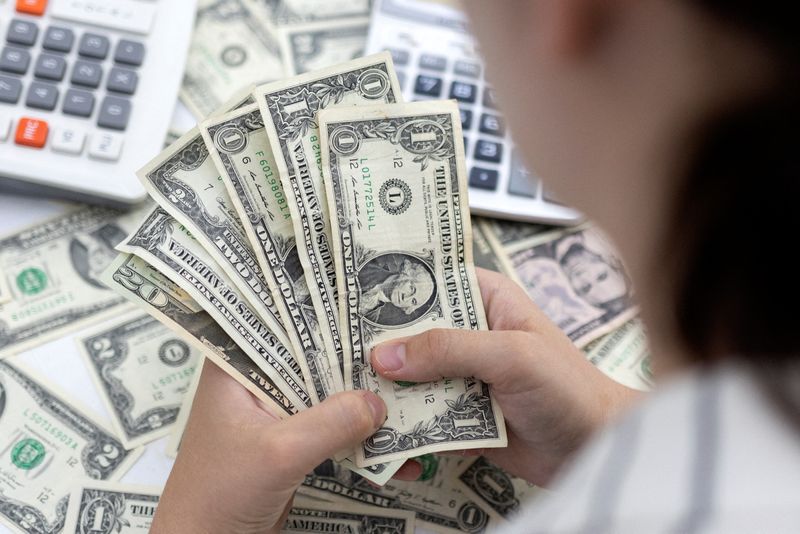
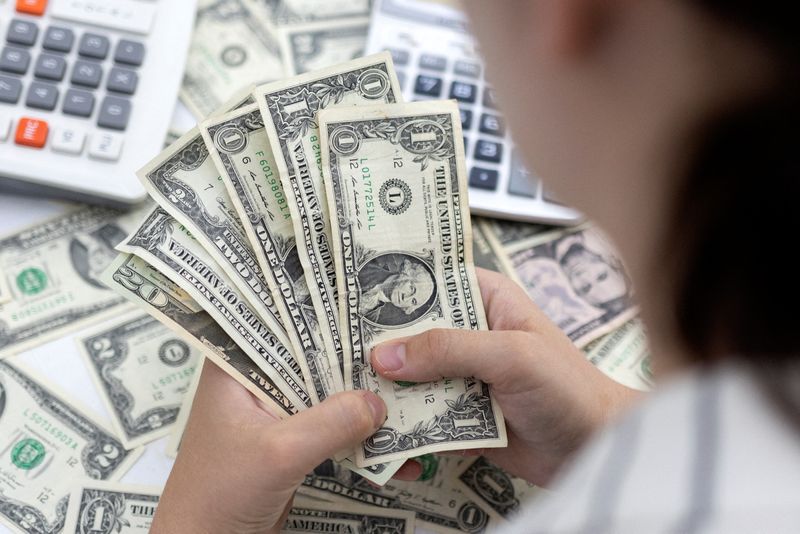
© Reuters. FILE PHOTO: Woman holds U.S. dollar banknotes in this illustration taken May 30, 2022. REUTERS/Dado Ruvic/Illustration/File Photo
By Brigid Riley and Alun John
TOKYO/LONDON (Reuters) – The euro, pound and yen were all pinned at multi-month lows on Tuesday, with the Japanese currency on the brink of weakening past the psychological 150 per dollar level, as surging U.S. Treasury yields kept the dollar firmly on the front foot.
The euro was steady on the day at $1.0476, around its weakest since early December 2022, after a near-1% plunge on Monday when U.S. manufacturing data came in strong and Federal Reserve officials said monetary policy would need to stay restrictive for “some time”.
The combination of that and an agreement to avert a partial U.S. government shutdown sent benchmark Treasury yields to as high as 4.706% on Tuesday, a 16-year peak, in turn driving the dollar higher.
“There are two very powerful things that are supporting the U.S. dollar at the moment, the real rate differential is favourable to the U.S. and the U.S. economy is outperforming,” said Samy Chaar, chief economist at Lombard Odier.
Real interest rates, unlike nominal ones, factor in inflation which is falling faster in the United States than in Europe.
Chaar said he also thought there were technical factors driving the sell-off in U.S. Treasuries, possibly capitulation by major investors, as the economic situation, in his view, did not justify yields continuing to rise.
The pound fell to its lowest since March and was last down 0.26% at 1.20565, and traders were focused on the Japanese yen which was flat on the day at 149.89 per dollar, but still around its weakest in nearly a year and just shy of the 150 per dollar level that some see as potentially pushing Japanese authorities to intervene to prop up the currency.
Japanese Finance Minister Shunichi Suzuki said on Tuesday authorities were watching the currency market closely and stood ready to respond, but also said any decision on currency market intervention would be based on volatility, not specific yen levels.
Although Japanese officials have stated “that the government is not watching any particular level … interventions had previously occurred around 150, signifying official discomfort when the (yen) weakens beyond this point”, said Wei Liang Chang, foreign exchange and credit strategist at DBS.
The , which tracks the unit against six peers, was up 0.13% at 107.16, at its highest since November.
The main data points in the United States this week relate to the labour market. “(Tuesday’s) U.S. JOLTS job openings and non-farm payrolls on Friday can be a catalyst to push up U.S. yields and the USD if they surprise to the upside,” said Carol Kong, economist and currency strategist at Commonwealth Bank of Australia (OTC:).
The Australian dollar slipped to an 11-month low of $0.6302, down as much as 0.95% following the Reserve Bank of Australia’s (RBA) decision to hold rates, while Russia’s rouble weakened past the symbolic threshold of 100 to the dollar before recovering slightly in early trade.
The dollar was up 0.5% against the Swiss franc at 0.9215 at a six month high after Swiss inflation dipped and came in slightly below expectations

 Forex3 years ago
Forex3 years agoForex Today: the dollar is gaining strength amid gloomy sentiment at the start of the Fed’s week

 Forex3 years ago
Forex3 years agoUnbiased review of Pocket Option broker

 Forex3 years ago
Forex3 years agoDollar to pound sterling exchange rate today: Pound plummeted to its lowest since 1985

 Forex3 years ago
Forex3 years agoHow is the Australian dollar doing today?

 Cryptocurrency3 years ago
Cryptocurrency3 years agoWhat happened in the crypto market – current events today

 World3 years ago
World3 years agoWhy are modern video games an art form?

 Commodities3 years ago
Commodities3 years agoCopper continues to fall in price on expectations of lower demand in China

 Economy3 years ago
Economy3 years agoCrude oil tankers double in price due to EU anti-Russian sanctions

